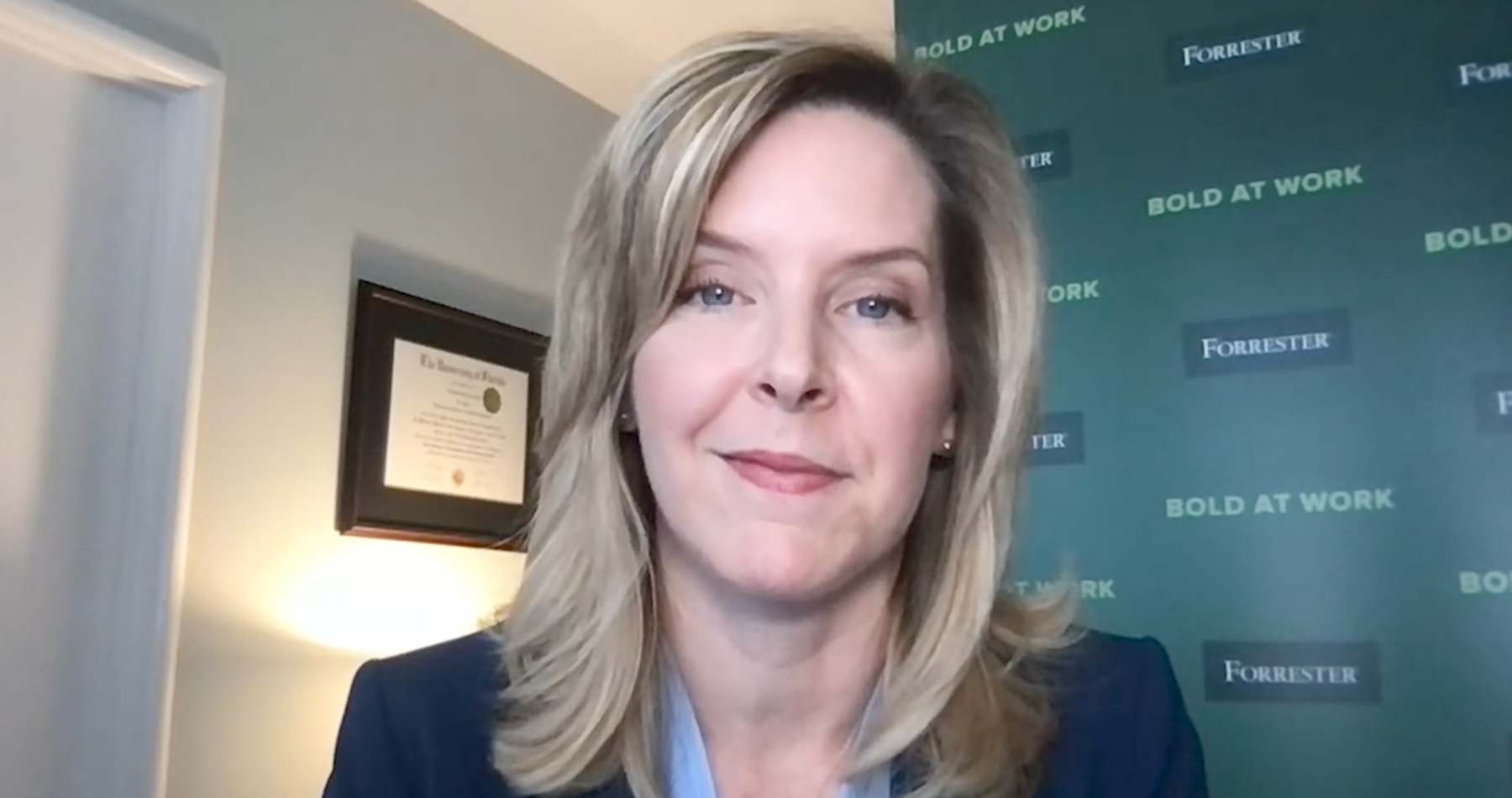Several things hold organizations back from creating content, according to Lisa Gately, Principal Analyst at Forrester.
- Siloed content
- Lack of alignment on audience needs
- Outdated manual processes or tools that don’t scale
- Inability to see audience interactions across the full life cycle
- Content management chaos
“These things are holding everybody back in this shift to a digital world,” said Gately during Brightcove’s PLAY Season 1. In her guest episode, she identifies the four major parts of the content life cycle and how to optimize them to overcome these hurdles.
CONTENT PLANNING
Content planning is a foundational part of the content life cycle and should be a defined, repeatable approach across the organization. Gately observed, “In reality, this is not happening for most teams.”
In Forrester’s 2022 State of B2B Content Survey, Gately noted that almost half the respondents said they don’t have a defined approach. “That leads to a lot of siloed, reactive, ad hoc planning. It means things happen on a first-come, first-served basis, or maybe a very reactive basis, that they decide what content to put out in front of an audience.”
Marketers should approach content knowing not just what to say to the market, but knowing how audiences search for their products. “What do they call things? What did they use when they talk about issues and topics?” said Gately. This process helps marketers become very precise in their content recommendations: adjusting the content mix, knowing about past content performance, and being intentional about where future investments in content are going.
Practically, this means looking across the organization through the lens of a shared content inventory. “Is there existing content you can use? Could you get there faster? Could you reuse, customize some of the content that you have? Or think about repurposing it for some of those audiences?” asked Gately.
CONTENT PRODUCTION
“This is really the area when most people think about content,” said Gately. However, content production is more than just making content; it’s about smoothing out workflows and processes. “You’re building content with others, and you need it to go more smoothly.”
Furthermore, content is created everywhere, “whether it’s your content team, different parts of the organization, or the relationships you have with agencies and vendors, partners—even your customers,” explained Gately. Therefore, establishing repeatable processes is key.
CONTENT PROMOTION
Creating content is exciting, but making sure it’s seen by the right people ensures the hard work is worthwhile. “Don’t leave content promotion to chance,” warned Gately. “We spend so much time thinking about the content we want to build, the creativity and expertise of creating the content, but we really need to focus on how it’s activated or promoted.”
To master this, Gately recommends that all marketers be prescriptive. “Think about this in terms of understanding your audience. It is knowing where they go for information, and what kinds of information they are looking for.”
The same applies for content for internal audiences as well. “When you make this content available to your internal audience, how are they going about getting this content? You want to make sure you tap into internal communications methods.”
Distribution is part of promotion too. Marketers should ask how certain content can be distributed easily for internal customer-facing stakeholders so that they can use it as quickly as possible.
“You want to make sure your analytics are right there. You want to notice who is using the content. And go back, take some extra effort. Notice how they set it up, how they customize it or serve it to the end audience,” explained Gately.
For both internal and external content, marketers need to make sure that they’re using tagging in metadata to best effect. “This is what helps you in noticing all those things from analytics.”
CONTENT OPERATIONS
Content operations constitute the final stage of the content life cycle. “This is really an area that stands up to a big word like ‘transformation,’” said Gately. And as businesses begin acting more like media companies, this is a skill that sets them up for success. “I’m not understating it,” Gately continued. “Most marketers tell us this is the one area across the content life cycle where they want to get better.”
Gately says this is good news: “When you think about the power of content operations, that involves understanding what content you have, your use of metadata, taxonomy, the content technologies and processes in your organization, how you measure things. All of that is what sets you up for success.”
Emphasizing metadata, Gately added, “Master the metadata and taxonomy. That really is the key to the kingdom. This will help teams get a handle on content, its value, and whether they’re hitting business objectives with it.”
From there, Gately recommended streamlining workflows to make better use of what content a company does have. “Start talking about and rewarding teams for doing that,” she advised. And of course, invest in content operations, specifically by designating some leaders or dedicating resources to this. “They are going to help you build the competencies to go farther and faster.”




